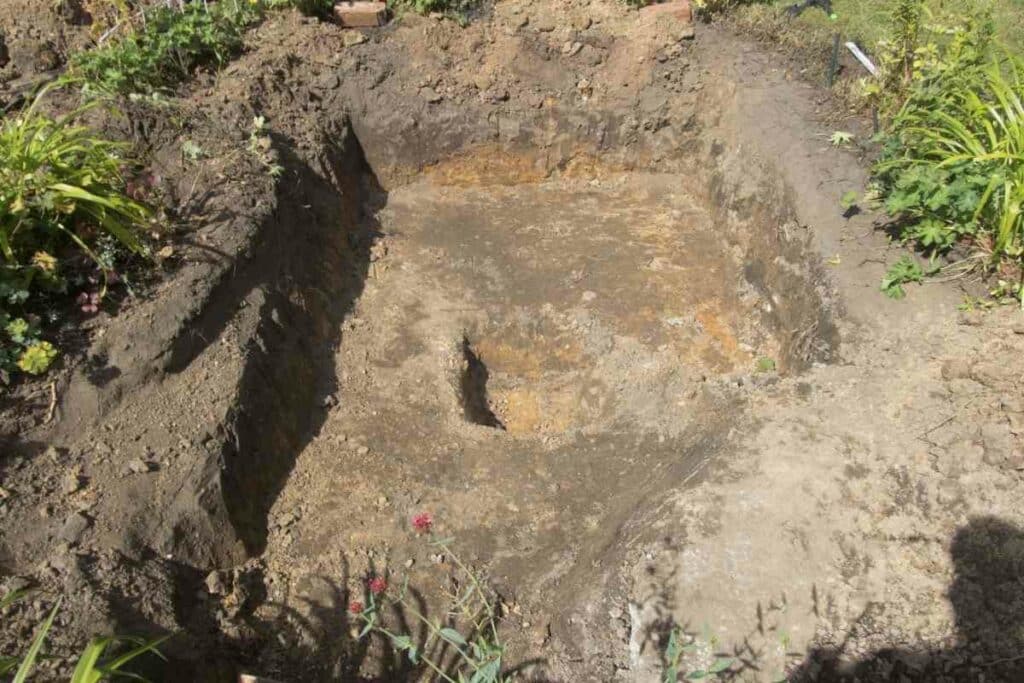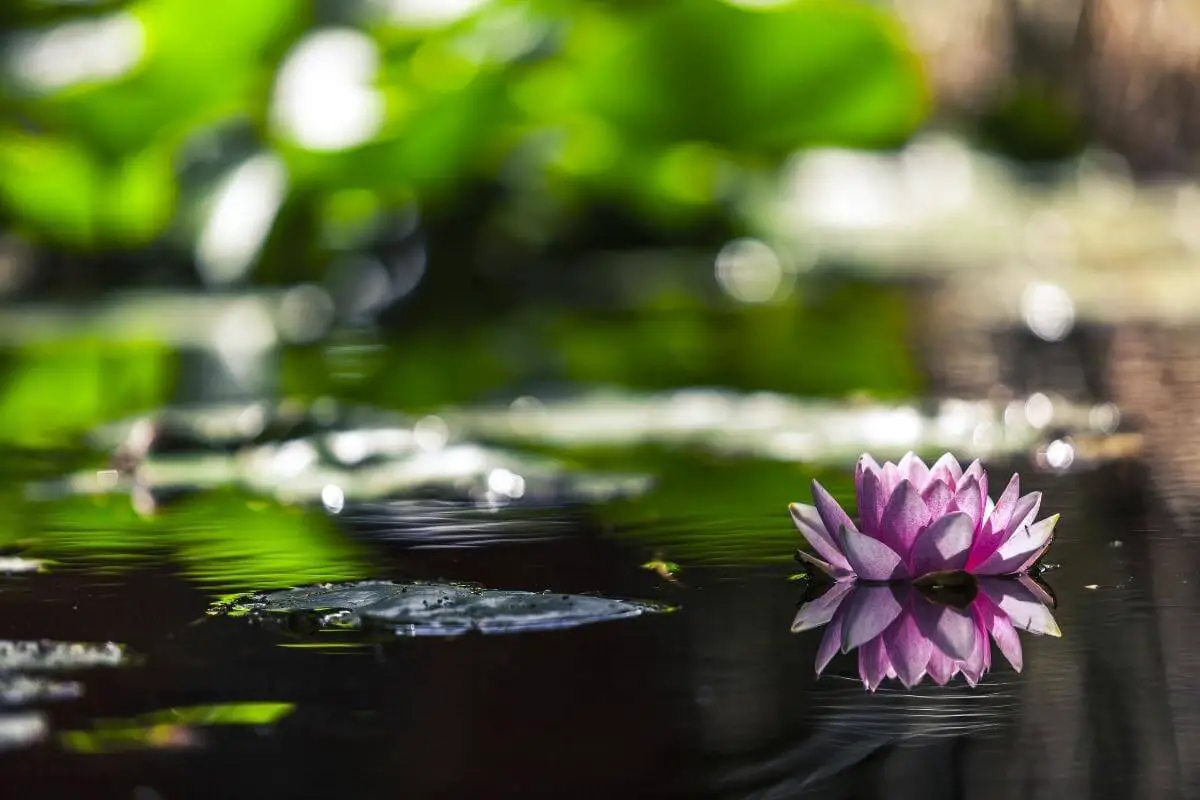Every manmade pond should have a liner, and some also recommend a layer of sand and gravel. While the need for a liner is indisputable (as the pond will otherwise leak into your lawn and garden), there is some controversy over the use of a substrate like sand or gravel.
There are pros and cons to using sand or gravel, as well as to using only a liner.
Learn more below!
Just a Pond Liner
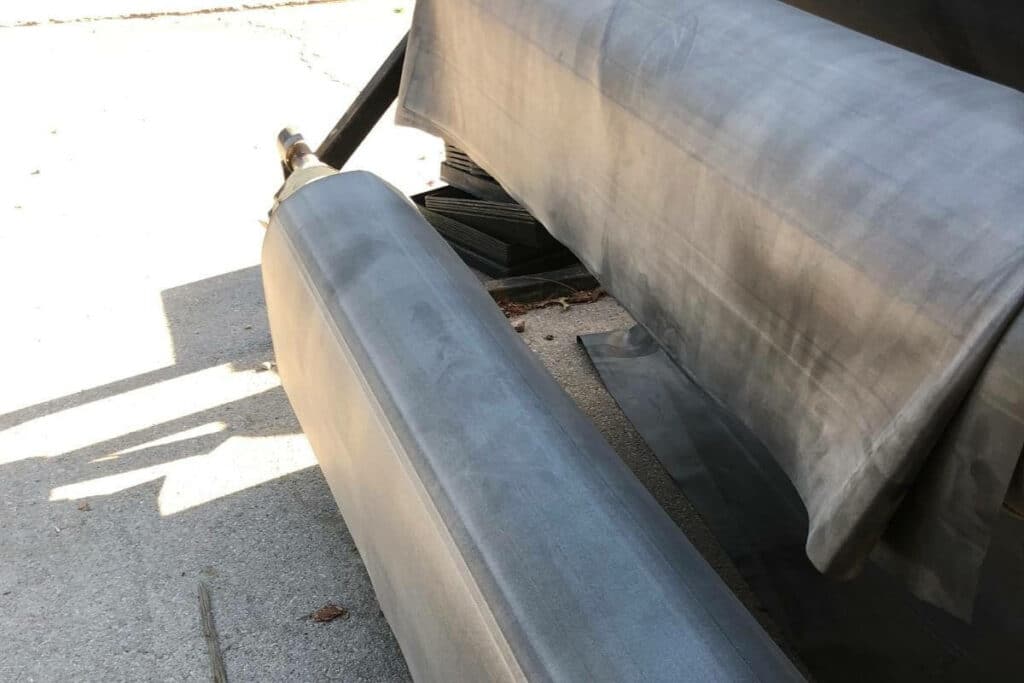
There are many who choose to use just a liner in their pond, forgoing any sand or gravel.
This is mainly because it can make things quite a bit simpler.
First off, you won’t have to go through the trouble of acquiring and distributing a suitable substrate.
Secondly, cleaning a pool that has a liner only is much easier. This is because you can simply give it a go-over with a pond vacuum cleaner!
What’s more, pond liners do not encourage the growth of algae compared to sand and gravel.
This means that come cleaning time, there should be very little gunk!
Pro’s
- Cleaning is simple and easy
- Inhibits the growth of algae and other kinds of pond gunk
- Provides a blank backdrop so any fish or pond critters can be seen clearly
- Creates a modern look
- Long Guarantee with liners
Con’s
- Doesn’t look quite as natural
- The pond wildlife might be more comfortable in sand or gravel
- Many (but not all) pond plants require sand or gravel
- Expensive
- Heavy to install
Sand
Sand is primarily used at the bottom of ponds:
- As decor
- But also, to allow certain underwater plants to grow
The best sand for the bottom of your pond depends partly on what wildlife you have; for example, catfish are bottom feeders, and their stomachs can be scraped by rough sand.
In this case, you’ll want sand that’s smooth and aquarium-quality. If all you have are koi, it won’t matter quite as much. Keep in mind that sand not only encourages the growth of plants but also of bacteria, however!
This means that sand (especially if it’s not filtered properly) can increase the chances of critters in your wildlife pond becoming sick!
In fact, sand will make cleaning a bit more difficult altogether.
You won’t be able to simply apply some elbow grease and a vacuum cleaner but will probably need to replace the sand.
You’ll also likely find yourself having to remove algae and other sand-borne gunk!
Pro’s
- Needed in order for certain plants to grow successfully
- Bottom-feeders (like catfish or corydoras) tend to prefer it
- Can help filter the water
- Creates a more natural look
Con’s
- Can make cleaning more difficult overall
- May comparatively encourage bacteria that can make pond critters sick
Gravel
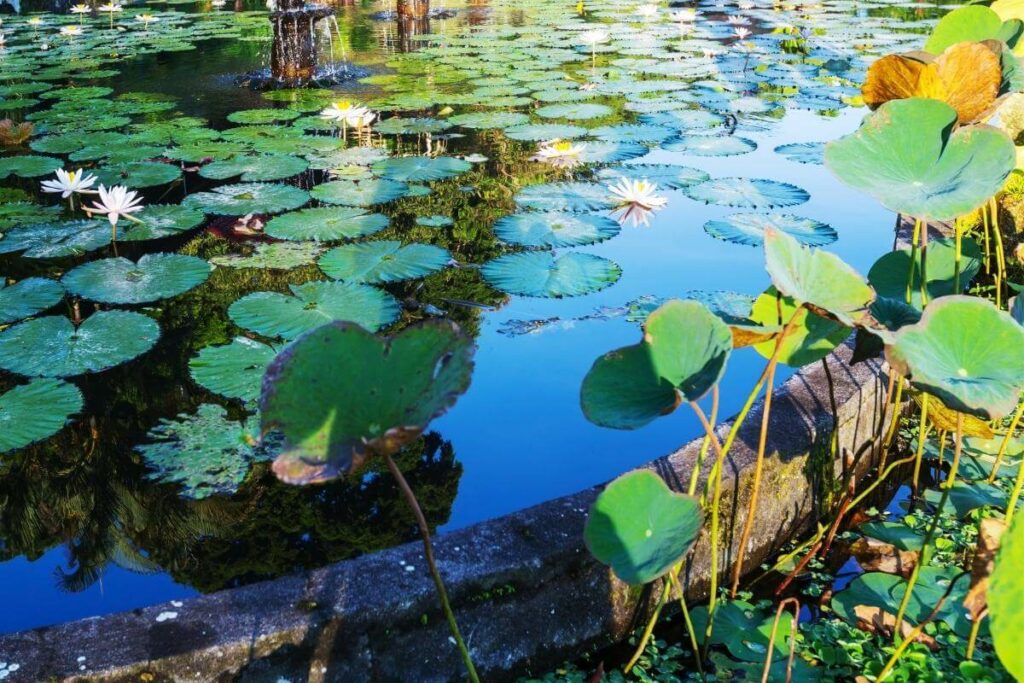
Like sand, compared to a plain liner, gravel will give you a much more natural look.
It also tends to stick together a bit less than sand. This allows oxygen and bacteria to penetrate the substrate, breaking down detritus and keeping the pond environment cleaner!
Some hold the opinion that gravel encourages harmful bacteria, whereas others say that it actually helps filter the pond.
Both have their merits, so here, it may come down to what you personally prefer. Unlike with sand, it can be possible to use a pond vacuum around large enough gravel.
Some gravel is too rough for bottom-feeding fish, so if you have these, this is also something to consider!
Pro’s
- Creates a very natural look
- Some say it helps filter the pond water
- Some underwater plants require a substrate (such as gravel) to grow
Con’s
- Some gravel is too rough for bottom-feeding/bottom-dwelling fish
- Some say it can encourage harmful bacteria and gunk
- Koi have been known to get sharp gravel stuck in their mouths
Clean Your Pond Regularly or Put the Health of Your Wildlife at Risk
A common problem among wildlife ponds is that they don’t get cleaned often enough.
Sometimes, they don’t get cleaned at all. Not only is this unsanitary, but it can put the health of your pond wildlife at serious risk!
In fact, keeping a clean pond is even more important than what you put on the bottom of it.
Harmful bacteria and sulfur will form when pond substrate is left undisturbed – essentially, deadly gunk.
Remember This: A pond should be cleaned at least monthly, to keep things like this in check!
Are Rocks or Pebbles Good for a Wildlife Pond?
If you’re looking for something more to put on the bottom of your pond than a liner, some smooth rocks or pebbles might do the trick.
Oftentimes, these are large enough that you can use a pond vacuum around them and sucking them up won’t be a risk!
Pond Plants for Oxygen and Decor

Plants can be the ideal decor item for a pond, as, more than anything else, they’ll give it that sought-after, natural look!
What’s more, they’ll act as a natural filtration system, breaking down detritus and turning CO2 into good old-fashioned O2, so your pond wildlife can breathe much easier!
- Water Starwort
- Water Violet
- Cardinal Flower
- Water Lettuce
- Mosaic Plant
- Willow Moss
- Microsword
- Water Lilies
- Yellow Flag Iris
- Chameleon Plant
- Hornwort
- Marsh Marigolds
- Horse’s Tail
Final Words
So, if you’ve been wondering, ‘what should I put in the bottom of my wildlife pond,’ there’s your answer: nothing but a liner, or sand, rocks, or gravel.
It all depends on your personal preference, and what you’re looking for.
It’s also equally important that you clean your pond roughly once a month, to keep harmful bacteria and the like in check!
- What Should I Put in the Bottom of My Wildlife Pond?
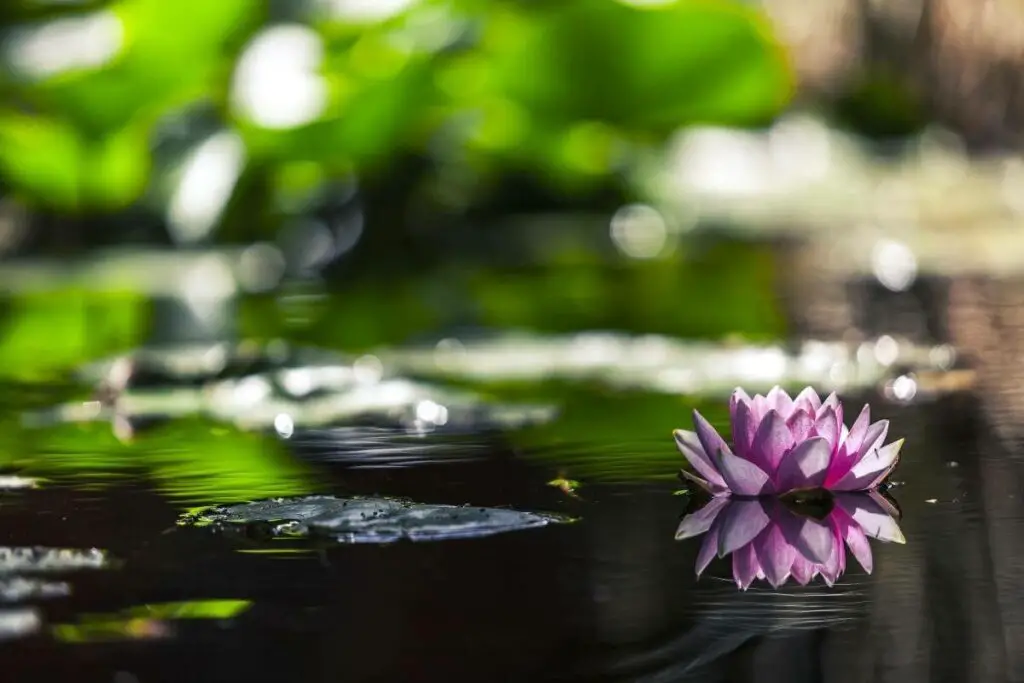
- Backyard Oasis With Pool: Creating a Relaxing Retreat in Your Backyard
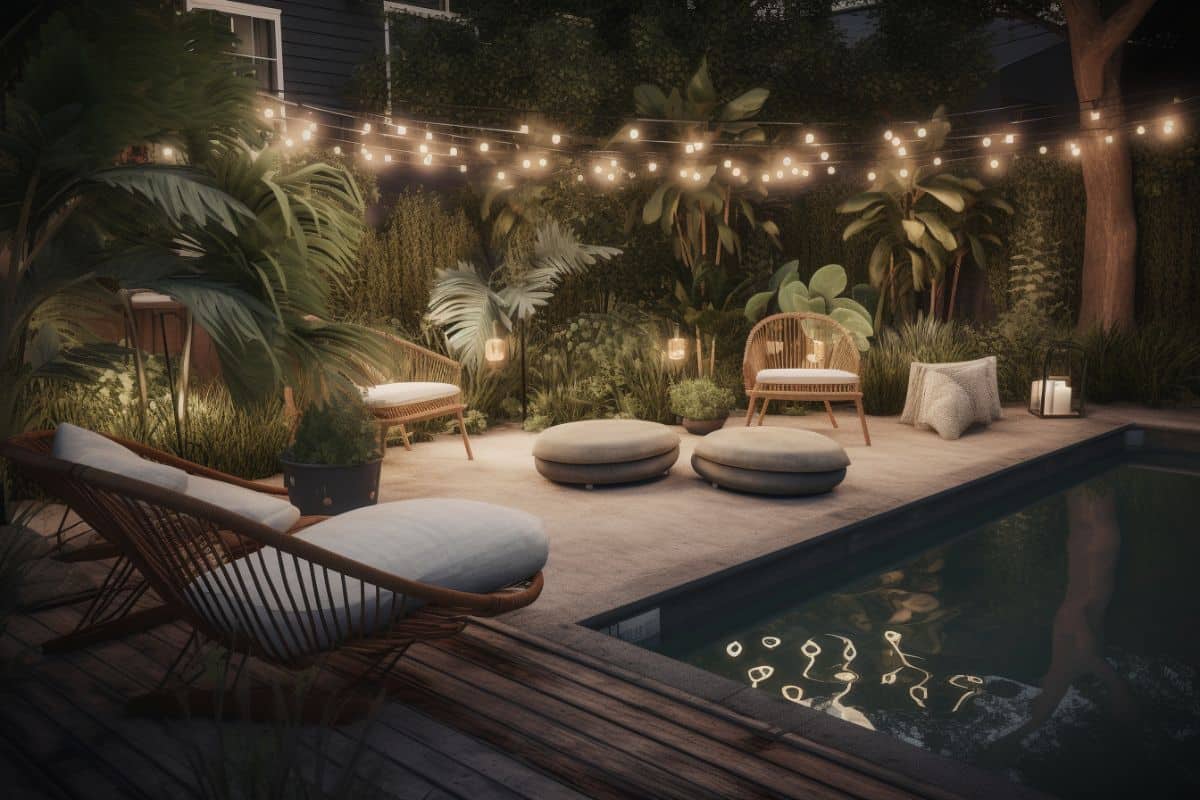
- How to Find Pond Leak (Quick Method to Find the Leaks)
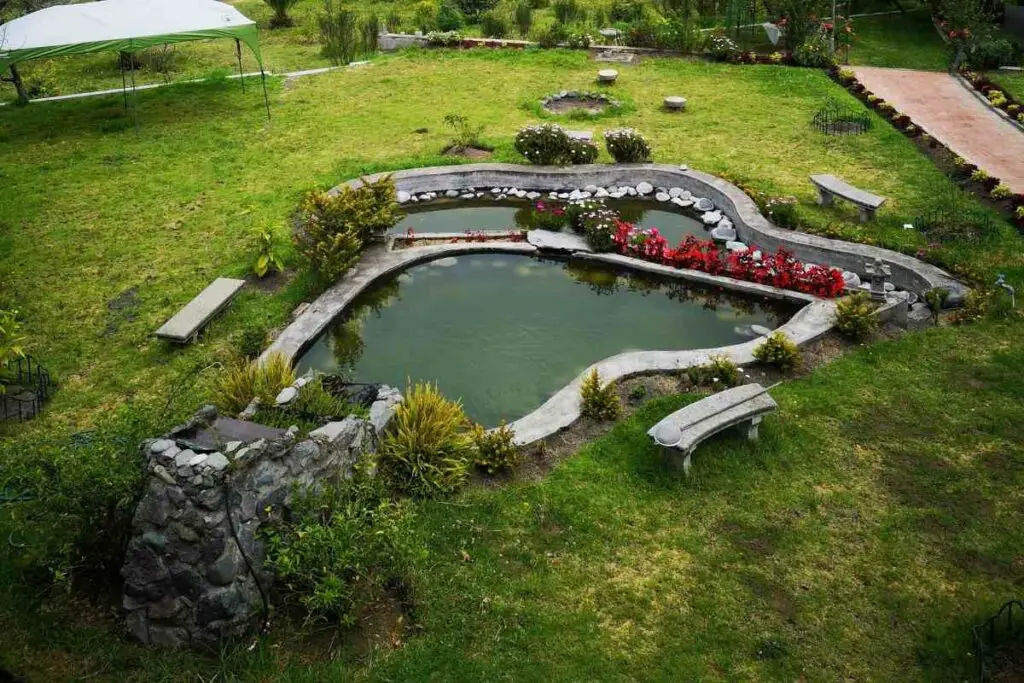
- Pool Ledge Lounger – Complete Buyers Guide
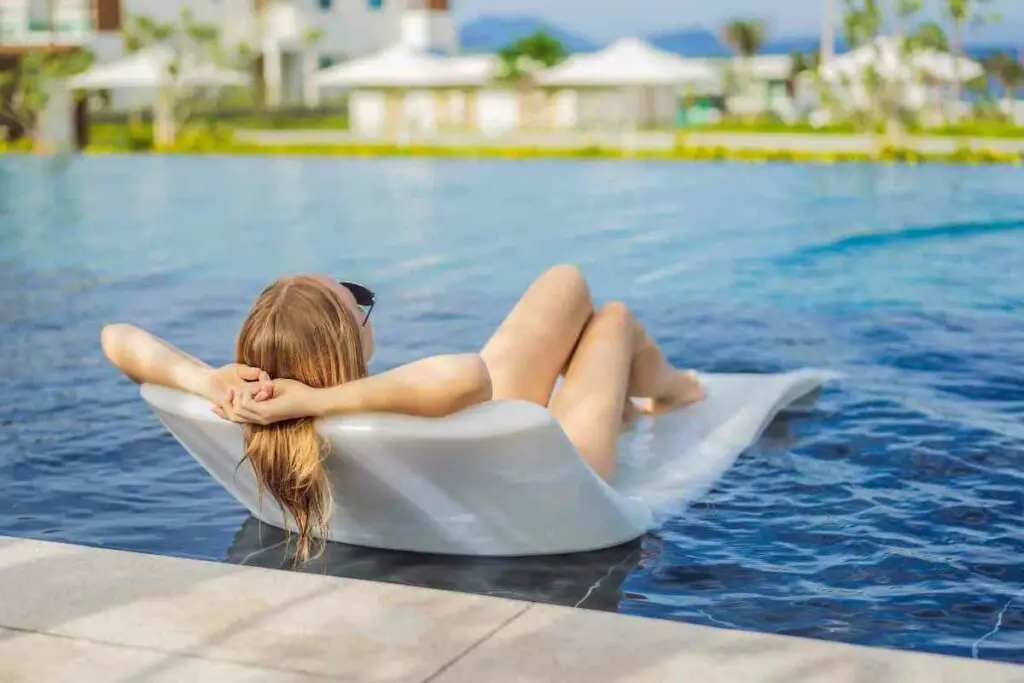
- Do Garden Ponds Overflow When It Rains

- How To Fill A Pond With Water (Complete Guide)
